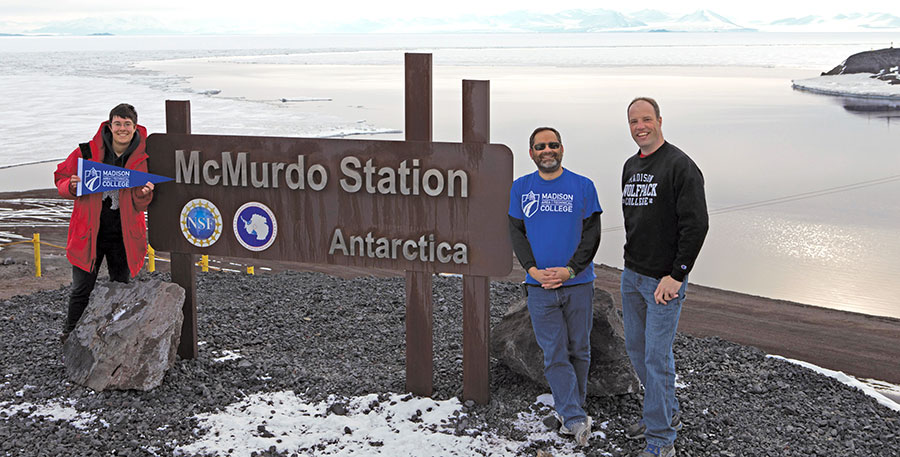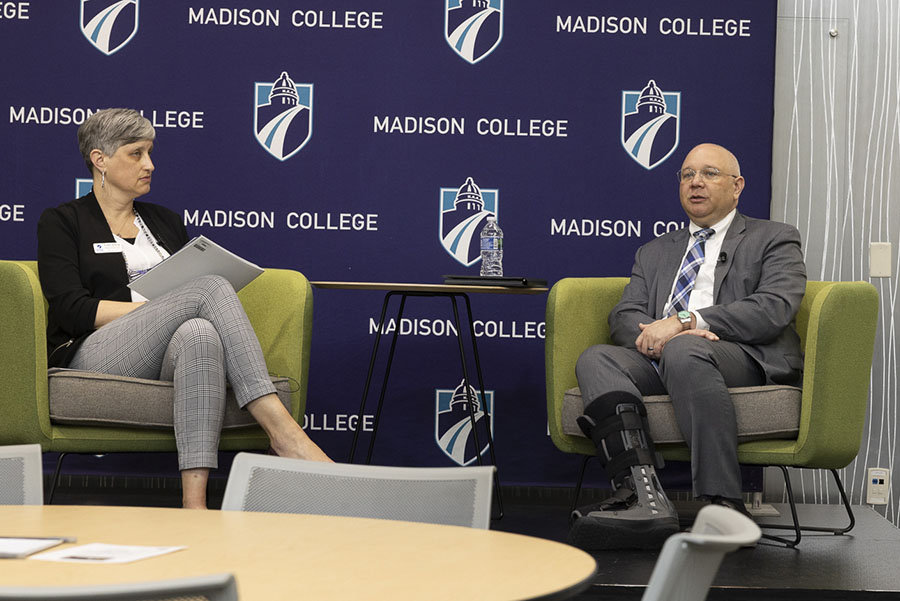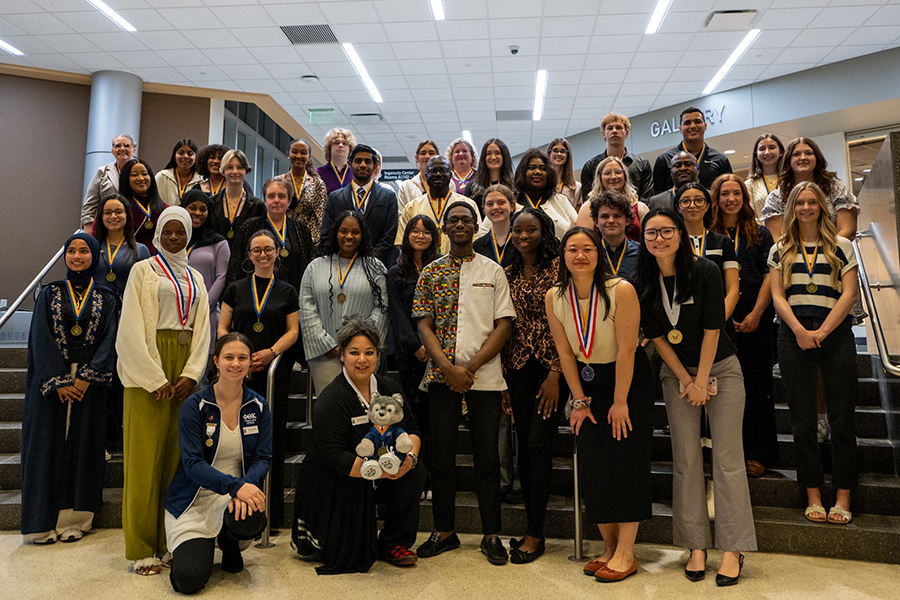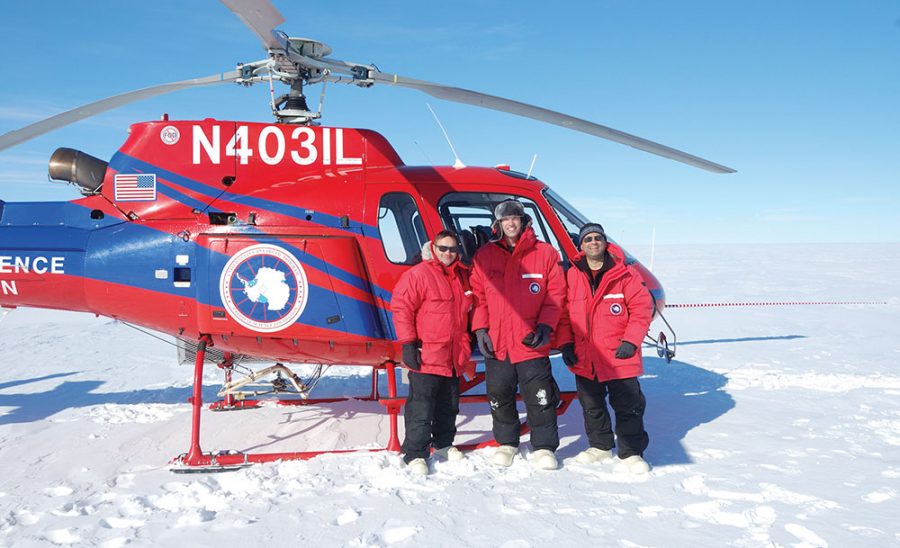Instructor shares experiences working at Antarctic station
Madison College instructors Andy Kurth, center, and Matthew Lazzara, right, worked at McMurdo Station in Antarctica. Kurth recently shared his experiences as part of the STEM Center Speaker Series.
An exhausted Andy Kurth thought he had struck the mother lode. From the top of Observatory Hill near McMurdo Station in Antarctica he saw, off in the distance, what he had set out to achieve.
“My wife told me that I couldn’t come home without a picture of a penguin,” quipped Kurth.
He excitedly attached the longest lens he had to his camera and started snapping pictures, hiking closer and closer to get the best picture possible.
“I got close enough to eventually notice that the penguin was actually flapping in the wind,” said Kurth. He had realized it was nothing more than a marker flag.
Throughout history, the harsh environment of Antarctica has rarely shown sympathy to explorers. On that day, though, Kurth became one of the lucky few. Defeated, sick and cold, he wallowed in disappointment. Suddenly, out of the water near the distant flag, hopped a penguin. Then another.
As a guest for the University of Wisconsin, the Madison College electronics instructor was invited on a two-month excursion early last year to conduct maintenance on UW-operated weather stations in Antarctica — affectionately referred to as “the Ice” by Kurth and colleagues.
Kurth shared his experiences in an Antarctica weather station as part of the STEM Center Speaker Series on Oct. 18.

These weather stations are constantly gathering climate data, which is used for global weather studies and for people doing other research on-site in Antarctica. The towers need to be kept up to date in order to remain functional in the extreme climate.
The work Kurth was responsible for on the Ice was writing code, modifying equipment to best suit the station, and installing new hardware at the stations themselves.
This was not as easy as it sounds; Kurth quickly realized that you need to be able to roll with the punches.
“There’s no RadioShack or Amazon on the Ice. You can’t get things. I went dumpster diving in the electronics scrap bin for what I needed,” said Kurth.
Prior to his trip, Kurth and students at Madison College were asked to be responsible for creating a custom circuit board to process and record these readings.
“We originally asked the National Science Foundation for five years and $1 million on the grant to develop a circuit board for the weather stations,” said Kurth. “We were given $600,000 and two years.”
During those two years, students and staff were busy trying to create a prototype for their uniquely tricky situation. As is the case with most electronics, temperature sensitivity is a major issue.
“Every component is certified down to -40 degrees Celsius. We are trying to get that down to -100 degrees,” said Kurth.
The hardware on the towers will be buried in snow or in the frigid air for a year or more. Either way, it is not a great environment for the equipment.
After Kurth’s six-week “vacation,” he was more than ready to return. When asked if he would ever want to go back to the Ice, he smiled.
“If you asked me the day I got home, I would have said never again. Now, I think it was well worth the trip and I would definitely go again,” he said,
Once he was back Stateside, Kurth got an Antarctic Service Medal for his time on the Ice.
The paperwork accompanying the medal prominently features an emperor penguin sitting upon a throne wearing a crown, which serves as a fitting reminder of his moving hike up Observatory Hill.



























